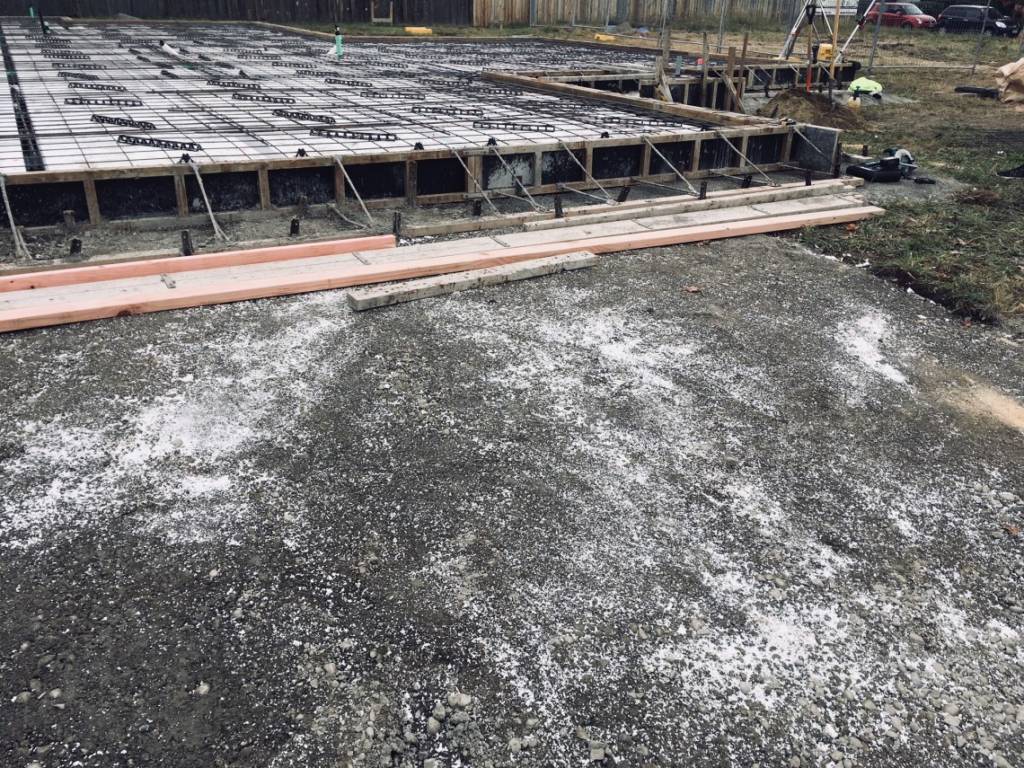The construction industry produces 17% of all landfill waste.Branz
“White pollution is solid waste that comes from the use of various types of life plastic products. These life plastic products are produced from polystyrene and other polymers. Plastic is difficult to degrade and dispose of resulting in major urban environmental consequences.
In New Zealand every year about 20,000 homes are constructed and most of the foundations are built using polystyrene waffle slabs. From those 20,000 homes each generate about 40 m² of soil that becomes polluted through the polystyrene offcuts and waste. So New Zealand generates around 800,000 m² of polluted soil every year.
Pods offcuts from waffle slabs pollutes around the size of 100 rugby fields all lined up one after another that are covered in polystyrene!
New Zealand is ranked the world’s 10th most wasteful country, producing 3.68 kilos of waste per capita a day. New Zealand’s population is only 4.693 million people, so the waste we produce and unless we all try to reduce our footprint our old “Clean Green” image is going to become obsolete.
EPS is expanded polystyrene made from 95% air. Once you cut EPS all the tiny beads break up and fly away and that is the real issue when using EPS in a waffle slab. Because the EPS is mostly air this makes it difficult to compact which in turn makes transportation expensive to either a recycling depot or into a landfill. A portion of the pollution from EPS offcuts end up underground within your landscaping at your new home because it is basically impossible to collect all the beads flying around at the building site. The EPS beads fly into the neighbouring yards, into storm water drains and eventually into our already polluted sea.
A Stuff article from February 18, 2016 (1) states that EPS beads were continually washing up on their shoreline. It was never proven where this Polystyrene was coming from, but we all need to remember this product and the way we dispose of it is endangering our wildlife. Polystyrene is not biodegradable, and the EPS beads can be mistaken by fish and birds as fish eggs and have the potential to cause blockages in their digestive systems.
An article published by BRANZ back in 2002 (2) showed that the construction industry was producing up to 17% of all waste in landfills. We need to take into consideration also the waste in the clean fill that has also increased to around 50% of all New Zealand’s generated waste. In the 2002 the Ministry of the Environment set out clear guide lines that the Construction and Demolition industry needed to reduce their landfill waste by 50% by 2008. I was not able to find any articles to back up whether this target was ever achieved (and for this reason I suspect it was not).
A sensible step forward would be to eliminate the pollution from EPS offcuts by substituting polystyrene pods with more modern and effective plastic void formers.
Fabio Parodi
CPEng (NZ_AU) MIPENZ Dott.Ing(ITA) M.Eng(Hons)
CEO and Founding Director of Cresco
www.cresco-group.com
(2) https://www.branz.co.nz/cms_show_download.php?id=292a5866bacbf3aad00794c5f014c024f8f36a6d


